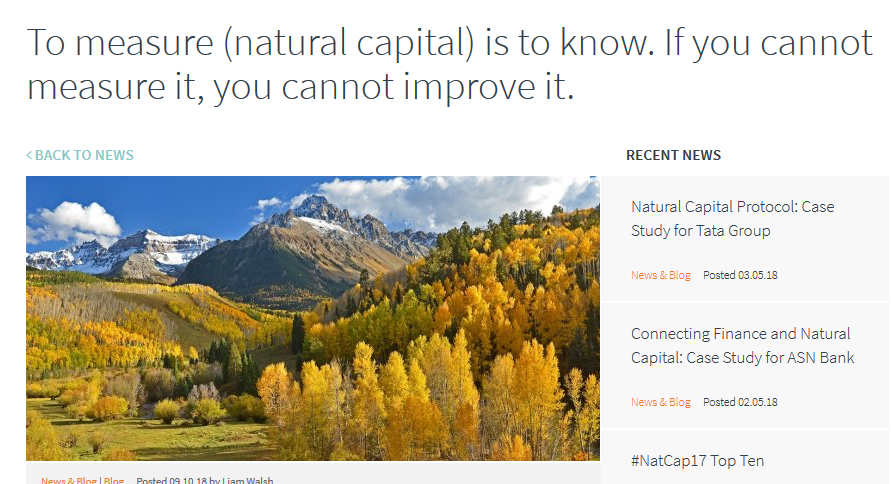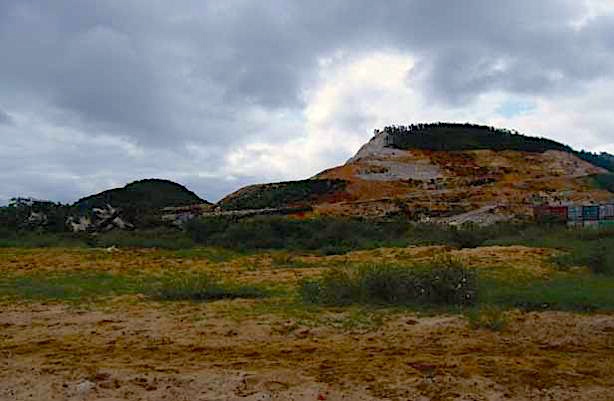Exploring private investments in conservation, conceptually and in concrete settings
CEESP News: by Masego Madzwamuse (Chair) and Caroline Seagle (Deputy Chair), CEESP Theme on Business, Best Practice and Accountability (TBBPA)
The terms “private investments” and “conservation” seem to exist at opposite ends of the spectrum, though we have seen the growth of business and conservation alliances in recent years. The Coalition for Private Investment in Conservation (CPIC), launched at the World Conservation Congress in 2016, joined together finance companies such as Credit Suisse, academic institutions like Cornell University, as well as conservation groups such as The Nature Conservancy, BirdLife International, Conservation International, and IUCN itself.
Ancestral mountain of the Antanosy people of Southeast Madagascar; villagers were displaced due to blasting for a rock quarry to build an international port for Rio Tinto/QMM's ilmenite mine. Rio Tinto has formed partnerships with IUCN and several conservation NGOs, and is engaging in controversial biodiversity offsets in Madagascar (see video). Photo copyright C. Seagle, 2009
The CPIC's purpose is to promote “substantial investment in natural capital.” Indeed, natural capital (NC), endorsed by IUCN through support for the Natural Capital Coalition and Natural Capital Protocol, has been a key way in which private investments flow into conservation. Predominantly business-led, established NC protocols seek to account for, quantify and economically value biodiversity as it is impacted by developers, including extractive industries.
Mechanisms such as biodiversity offsets, Payments for Environmental Services (PES) or Reducing Emissions from Deforestation and Degradation (REDD) are central to NC frameworks. The rationale is that by identifying the economic value of nature, we will be in a better position to 'save' it. IUCN has also formed partnerships with the mining sector, e an example being the partnership established with multinational Rio Tinto in 2010 on natural capital. The Business and Biodiversity Offset Programme (BBOP), as well as the World Business Council on Sustainable Development (WBCSD) also point to the growth of institutional frameworks surrounding private involvements in conservation.
Private investment in conservation has grown from $5 billion in 2013 to over $8 billion in 2015, according to the HYPERLINK "https://www.forest-trends.org/publications/state-of-private-investment-in-conservation-2016/"Ecosystem Marketplace's 2016 report on the State of Private Investment in Conservation. The report captured investments in three categories, sustainable food and fibre production at $6,5 billion, habitat conservation (including forest carbon trading, offsets, etc.) at $1,3 billion, and water quality and quality (including watershed protection, water rights and water credits trading, etc.) at $0.4 billion. In July 2019 HYPERLINK "https://spaceforgiants.org/2019/07/01/press-release-space-for-giants-working-paper-building-a-wildlife-economy-2/"Space for Giants announced two new Conservation Investments Initiatives for Gabon and Zimbabwe, following a successful bid to unlock $60 million on its pilot phase in Uganda. The increase in investments, although not without criticism, has provided innovative and much-needed capital for conservation.
Urgent need for critical perspectives
Gaps remain in these market-based approaches to reconciling environmental demise through economic compensation. Many CEESP members have been at the forefront of voicing critical perspectives on natural capital, and events were held at the 2016 WCC to this effect. Both scholars and activists have critiqued private investments in conservation. One key concern is that economic valuations of nature might undermine diverse cultural understandings and traditional uses of land in different settings and disrupt local and Indigenous land rights and access regimes.
 Photo: Screenshot from the World Forum on Natural Capital.Exploring private investments in conservation Accessed 01.03.2020.
Photo: Screenshot from the World Forum on Natural Capital.Exploring private investments in conservation Accessed 01.03.2020.
To measure (natural capital) is to know. If you cannot measure it, you cannot improve it." Screenshot from the World Forum on Natural Capital, Accessed 01.03.2020.
Where is it working?
However, not all investments result in adverse outcomes. Which businesses are demonstrating best practices, and which are not? What types of accountability and ethical frameworks are present or lacking from these mechanisms? In turn, not all local and Indigenous communities are resistant to these investments; some might embrace them as they could result in positive outcomes for health, economic opportunity and even human security. It is important to track which businesses are engaging in 'best practice' so as to set an example for future investments.
Fundamentally, as a collective group, we have an opportunity and a responsibility to determine what 'doing it right' means.
Steps forward for the TBBPA
The TBBPA (CEESP Theme on Business, Best Practice and Accountability) has been focusing on two key areas of concern: 1) environmental defenders and 2) private investments in conservation.
At the IUCN World Conservation Congress in 2020, the TBBPA and CEESP will launch a special issue of Policy Matters on environmental defenders. Articles speak to private investments in conservation, responses, and resistances.
In May 2020, as a pre-Congress event, the TBBPA will host a webinar devoted entirely to the subject of private investments in conservation. The webinar will feature a panel of esteemed speakers and a multi-stakeholder dialogue (e.g. the private sector; local and Indigenous Peoples; scholars; key members of the Business and Biodiversity wing of IUCN; IUCN leadership). The webinar will be open to all, and an online discussion will follow.
Concluding thoughts
Given the increase in conservation investments since the last Congress, it is an opportune moment to take stock of these developments and engage in a lively debate, exploring how private investments in conservation work conceptually and in concrete settings. At the 2016 World Conservation Congress, CEESP committed to upholding 'diverse values of nature' as one of their main foci. It is clear that IUCN and CEESP must deepen the discussion on the underlying logics and stakeholder configurations surrounding private investments in conservation, with a closer focus on actual implementation processes, successes and failures. Multi-stakeholder dialogues including business but also local and Indigenous representatives and governments must occur in order to have a balanced understanding.
Masego Madzwamuse (Chair) and Caroline Seagle (Deputy Chair), CEESP Theme on Business, Best Practice and Accountability




